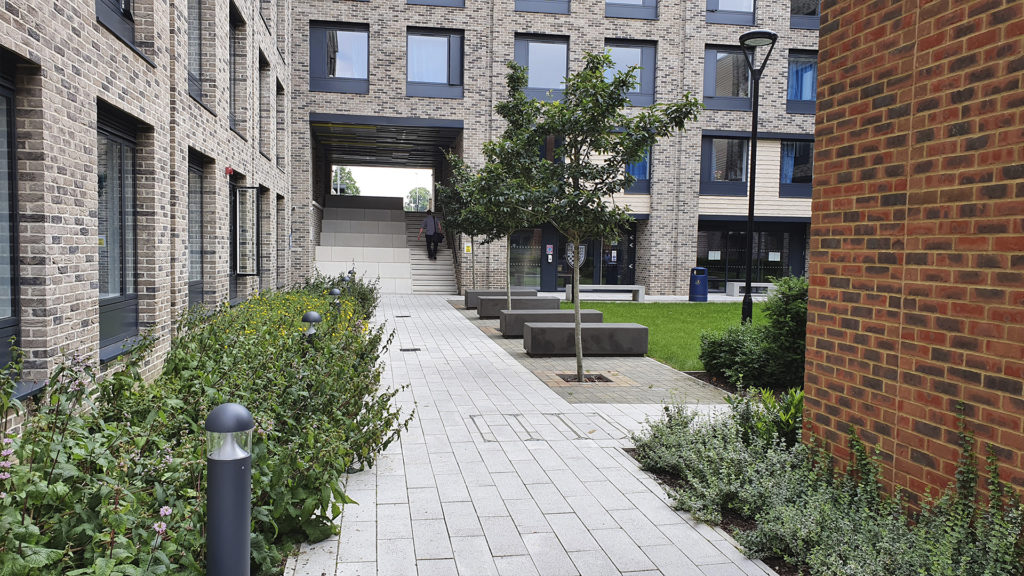During our #Resilientplaces campaign, we have asked the question: what does resilience mean to you?
In today’s blog, we will dive deeper into transforming our mindset, recognising resilience, present and future. Having come across a recent phrase;
May you live in interesting times
Originally thought to be a Chinese saying, implying that “interesting times” usually bring strife, disorder and conflict, however, it’s more likely to originate with 1900s politician Joseph
Chamberlain – but the point stands. “Interesting times” mean trouble for societies, economies, governments and businesses alike.
Instead of assuming our towns and cities will just cope with whatever is thrown their way be it economic or environmental, blaming harsh weather or a political catastrophe resilient planning is the intelligent mindset to adopt, assuming the crisis before it takes place, adopting best practices, design for the long term, continued collaboration and communication.
Planners and policymakers have the insightful role of monitoring and implementing solutions that have a positive effect on our social, economic, and environmental state, with both immediate and long-term measures that shape change.

Urban living within a resilient framework can be identified as a complex adaptive process, offering a sense of safety and protection to #adaptingclimates, but these solutions do not have to be complicated to implement.
Cities are at the forefront of the fight against biodiversity loss, climate change, and pollution, the question is how city-led greening initiatives might be scaled up through this ambitious commitment. (GEF-8 Funding).
In a world that contains limited resources, we are steered to re-use what already exists in a new and innovative way. The term Circular Economy is now being widely used, which is why GreenBlue’s RootSpace Soil Cell is made of 100% recycled material, removing this plastic waste from landfill, and reusing it to benefit our green infrastructure that provides a multitude of benefits. From addressing our heat island effect by encouraging mature canopy leaf cover, to dealing with our stormwater issues; creating a resilient place beneath our feet. Our urban tree planting materials are a hidden treasure within our streetscape, protecting our urban realm from the elements.
Designing this system is far from complex, designing a tree pit is based on soil volume, the most critical factor in tree health and longevity, when planning trees for urban projects, it is crucial that the target soil volume is established in the early design stages. Discover our handy soil volume calculator here! Installing RootSpace is simple, often referred to as a large-scale Lego set; due to its easy to use modular components simply clicking together to form a load-bearing void beneath the paving; allowing the tree roots to grow in natural uncompacted soil.

For many years, every high street was a clone of the next, consisting of a row of shops, cafes, and street vendors. However, in the present day, our designs and schemes are extensive, regenerated high streets have gained their local identity through their unique and physical appearance, often recognised through landscaping. Healthy competition between Boroughs has allowed planners, designers, and policymakers to inspire, encourage and support one another to transition our high streets into built, multifunctional, resilient often smart shared spaces.
Manchester has been recognised as one of the European cities in the ‘Making Cities Resilient 2030’ (MCR2030) initiative. This programme addresses each entree through its delivery of a clear roadmap to urban resilience. MCR2030 offers support to cities during their journey to reduce the risk factors of climate change and build a resilient city for the community.
“Greater Manchester is a place that always works in partnership and always wants to forge strong bonds with our fellow cities across the world. We know that the world is changing – including the impact of climate change, we know that we cannot just standstill, and we must work hard to boost our resilience.”
Andy Burnham, Manchester City Mayor
Manchester’s neighbouring town of Salford recently underwent a major regeneration, so much so that little of the original remains except some of the municipal buildings. As part of the planning application, a sustainable drainage system alongside a new cycle path was constructed, including rain gardens and tree pits. These green elements were supported below ground by the GreenBlue Urban StormForm system, with RootSpace soil cells and Root Directors, with carefully chosen plants that will attenuate and clean the stormwater running from adjacent hard surfacing creating a resilient multifunctional exemplar case study.

GreenBlue Urban are proud to work alongside partners including GMCA and City of Trees who are committed to increasing the use of nature-based solutions towards creating a resilient city with plans to install several retrofit schemes in areas where canopy levels are low. This forward-looking resilient recognition means the whole city will benefit, improving the quality of life for all those to reside, work or visit this Northern metropolis.
Our collaboration continues with an upcoming tree pit installation for tree officers with UBU and COT following this will be our Northern 30-year anniversary event to be held at MMU later this summer.
If you want to be involved in these events and discover more about creating a resilient advocate city email us at [email protected]



